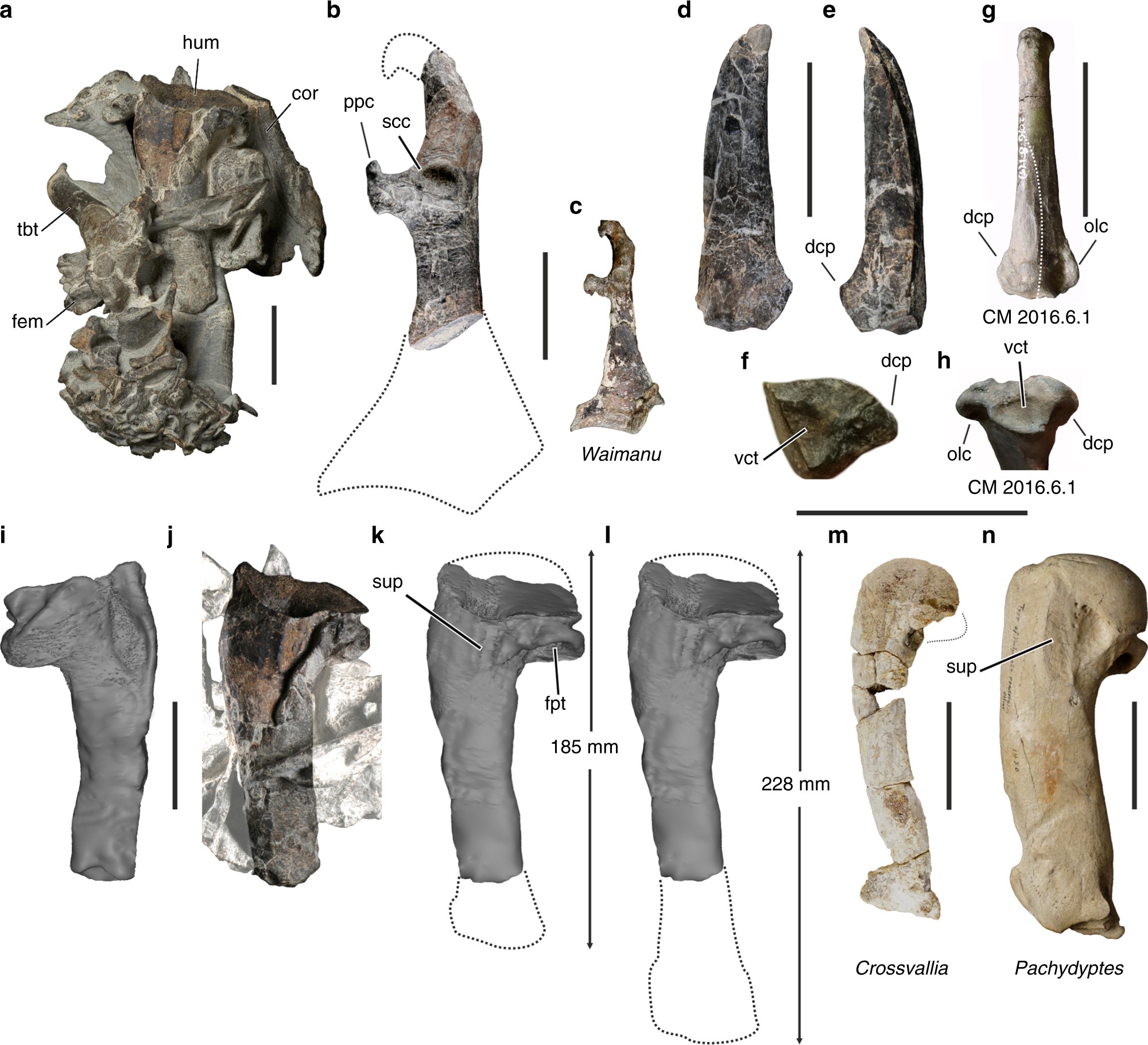A new species of crested penguin that lived 3.2 million years ago (Pliocene period) has been identified from multiple exceptionally well-preserved specimens found in New Zealand.

Holotype specimen of Eudyptes atatu: (a) right lateral view of skull and block with (c) mandible and (d) postcranial elements; (b) right lateral view of the Snares crested penguin (Eudyptes robustus) for comparison. Referred material of Eudyptes atatu including (e) dorsal view of skull, (f) left lateral view of skull, (g) right humerus caudal view, and (h) dorsal and (i) plantar views of right tarsometatarsus. Image credit: Jean-Claude Stahl, Museum of New Zealand Te Papa Tongarewa / R. Paul Scofield, Canterbury Museum.
Crested penguins are members of Eudyptes, the most diverse genus among living penguins.
/https://tf-cmsv2-smithsonianmag-media.s3.amazonaws.com/filer_public/12/e2/12e2a24e-c484-4e53-83e3-58d78b5d1ae7/ujvp_a_1953047_f0002_oc.jpeg)
Today the New Zealand region is home to four breeding species of this genus, including three endemics.
Named Eudyptes atatu, the newly-identified species was closest in size to the modern erect-crested penguin (Eudyptes sclateri).
It had a markedly more slender upper beak and jaw compared with other crested penguins.
“The skull of Eudyptes atatu is more gracile than that of any living crested penguin species, with a more slender, gently hooked beak lacking the strong swelling of the beak tip rostral to the nares characteristic of living crested penguins,” said Massey University ornithologist Dr. Daniel Thomas and colleagues.
“The most striking difference between Eudyptes atatu and living crested penguins is the shape of the jaw.”

“Whereas the jaw of modern crested penguin species shows a pronounced deepening towards the midpoint, in Eudyptes atatu the jaw retains a more slender shape.”
The discovery of Eudyptes atatu also shows that the deep bill of crested penguins evolved comparatively recently, most likely in the past 2-5 million years.
“Our combined evidence approach reveals that deep bills evolved in both crested and stiff-tailed penguins (Pygoscelis) during the Pliocene,” the researchers said.
“That deep bills arose so late in the greater than 60 million year evolutionary history of penguins suggests that dietary shifts may have occurred as wind-driven Pliocene upwelling radically restructured southern ocean ecosystems.”

The various fossilized remains of the ancient species were collected from the Tangahoe Formation in the southern Taranaki region of the North Island of New Zealand.
“Eudyptes atatu provides an important new window into the evolution and paleobiology of crown penguins and reinforces the importance of Zealandia for seabird evolution,” the scientists concluded.
“The rapidly improving fossil record of both early stem penguins and Pliocene-Holocene stem penguins suggests that Zealandia was an incubator of penguin diversity in which the first penguins, the first crown penguins, and likely the first crested penguins evolved and later dispersed throughout the southern hemisphere.”
Source: sci.news





